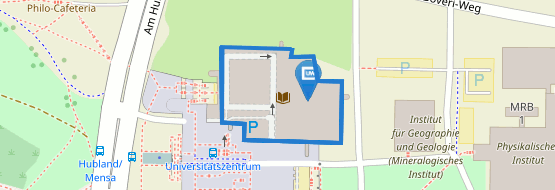Lower Franconian Bibliography: Content
As a regional bibliography, the Lower Franconian Bibliography (Unterfränkische Bibliographie) contains literature about the administrative district of Lower Franconia and geographical and historical neighbouring districts.
To ensure good search results, please note the following:
Territory
The bibliography focuses on the modern administrative district of Lower Franconia. Administrative boundaries are exceeded where there are no clear spatial restrictions:
- The surrounding uplands of Spessart, Rhön and Steigerwald
- All historic questions relating to the Bishopric of Würzburg
- The historic interweaving areas of Hohenlohe Franconia, Tauberfranken and Henneberg Franconia.
People
People are considered relevant who were born in the region and/or lived and worked and/or died in the region.
Periods covered
The database available here covers the reporting years 1962 to 1987 of the Lower Franconian Bibliography.
Data from the Lower Franconian Bibliography from reporting year 1988 onwards can be found via Gateway Bayern and the OPAC Bavarian Bibliography (Bayerische Bibliographie).
Titles from the reporting years 1945 to 1961 are gradually being integrated into Gateway Bayern and the OPAC Bavarian Bibliography.
Titles published before 1945 are included in the Franconian Bibliography (Fränkische Bibliographie) database.
An older version, the "Lower Franconian Bibliography" (Unterfränkische Bibliographie) CD-ROM database, contains titles published up to 1996. This can be used in the Würzburg University Library and via the university network. You can also search titles from 1945 to 1989. Work is currently underway to transfer the data from the previous CD-ROM database to the Bavarian Bibliography.
Scope
The database contains 37,885 titles. Additions to the Lower Franconian Bibliography are being integrated into the Bavarian Bibliography on an ongoing basis.
Literature evaluated
The bibliography evaluates academic literature and ‘grey literature’ (privately printed documents, company and association documents, etc.)
In addition to standalone publications (monographs, including those in foreign languages), it lists items not published alone, particularly articles from journals and collected editions.
Around 500 current journals are evaluated, including regional periodicals and a range of academic titles. It also includes musical scores and maps with a link to Lower Franconia and academic assessments from the field of geology (not available in the Hubland Central Library).
The bibliography does not include the following: publications in official gazettes, timetables, phone books, newspaper articles from 1997 onwards, annual reports from institutions and companies (unless subject to legal obligation to supply), commercial items printed in addition to regular publications, flyers, sales catalogues, calendars, printed graphics, field maps and land register maps, legal texts, or academic assessments unless provided to the Würzburg University Library.
Indexing
There is no subject indexing for the titles in the Lower Franconian Bibliography database (1962–1987); you cannot search for them by classification or using subject headings. However, you can use the free text search to look for terms (keywords).
History
The Lower Franconian Bibliography database replaces the exclusive individual volumes published each year until 1996. Up to this point, the bibliography was printed in the ‘Main-Franconian Annual for History and Art’ (vol. 15, 1963 – vol. 49, 1997 = 20/NZ 90001 G927).
Since 1962, the Lower Franconian Bibliography has been collated by the Department of Franconian Regional Studies in Würzburg University Library.
Since 1996, the Lower Franconian Bibliography has been collated as part of the collaborative Bavarian Bibliography system involving libraries from all seven Bavarian administrative districts.
The printed volumes of the bibliography have been scanned and converted into a database using text recognition. An initial version of the database was made available online as part of the ‘Franconica Online’ portal. The second version of the database, in which some obvious errors have been corrected, uses the search engine technology SolR.
More helpful information can be found in the search tips.


